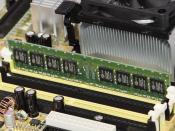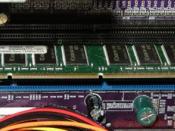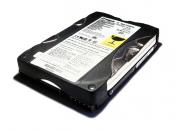Accuracy of data input is important. What method of data input would be best for each of the following situations and explain why:
a. Printed questionnaires
Keyboard; aside from avoiding uncertainty from unclear handwriting or other methods, and because "...most input data consists of letters and numbers. In addition, people are usually familiar with how to use keyboards and with the layout of the keys. Thus, little training is required for users to become familiar with keyboards" (Nickerson, pg. 75 of view-text)
b. Telephone survey
Touch-tone (keypad) input. Also considered a keyboard by the text, so the cite still applies here for reasoning.
c. Bank checks
Optical Scanning Input device; MICR OCR print allows for a quick scan and routing of the check to the proper bank and branch - today's stores take checks, input the amount into a keypad (see a and b) and scan them through the check reader making it similar to an ATM transaction.
d. Retail tags
Optical Scanning Input device; Bar-coding allows for easy data-read for inventory and pricing purposes - without the bar code the cash register would be a pretty big calculator with a drawer.
e. Long documents
Funny - I just finished attempting to explain typewriters to my daughter. Ideally a good voice-recognition software would be ideal to get the bulk, using a keyboard only for tweaking, editing, and formatting as needed (because one of the drawbacks to a keyboard is, of course, carpal-tunnel). But due to the nature of the business world (edits, re-edits, additional input, removed sections) the keyboard is going to be the way to go.
Convenience and quality of output are important. Explain what method of output would be best for each of the following situations and explain why:
a. Hand held computer
Wireless data transfer - the...



Accuracy of data input is important. What method of data input would be best for each of the following situations and explain why
Is good
2 out of 2 people found this comment useful.